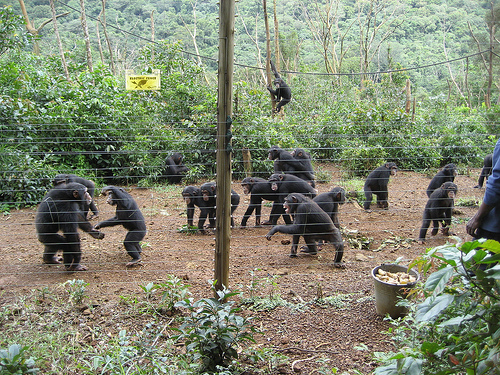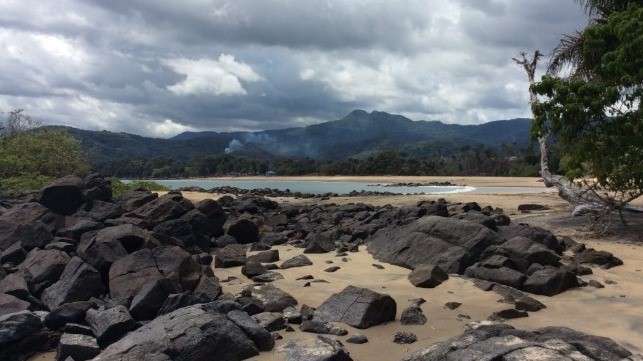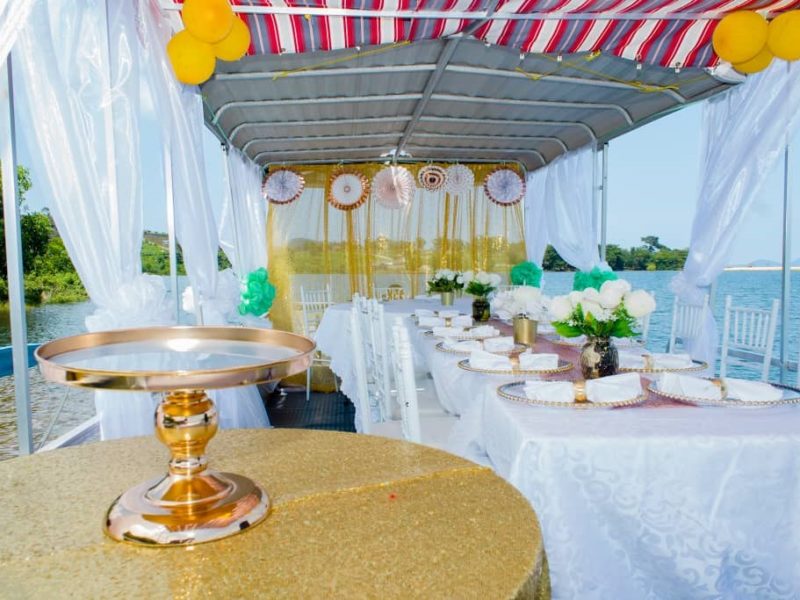Developing Sierra Leone’s tourism potential
The 2013-2015 Beijing Action Plan, which came out of the Fifth Ministerial Conference of the Forum on China-Africa Cooperation (2012) held in Beijing, China highlights the great progress that has been made in China-Africa tourism cooperation, especially in terms of the fast growing number of tourists between the two sides and especially the fact that Africa is becoming an emerging tourist destination for Chinese nationals, given that there has been an increase in Chinese tourists visiting Africa. It is in line with this given development that both China and Africa have agreed to continue stepping up bilateral exchanges and exchanges in tourism and ensure an effective cooperation in information sharing, tourism investment, skills training and tourism safety, amongst others. (Photo: John Pa Baimba Sesay, IA, China)
Africa’s untapped industry:
Tourism remains to be one of Africa’s major sources of revenue generation when and if fully utilized. In Kenya, the industry is reportedly by far the largest single export earner in Kenya as it forms a vital foundation for the country’s economy and it highlights two of Kenya’s most unique features: wildlife and beaches. In the East African sub region, Kenya is said to be leading its neighbors in the industry. A solid infrastructure coupled with a devotion to wildlife conservation has propelled Kenya to the forefront of the regional tourism industry. (Visit: http://www.ktdc.co.ke/tourism/tourism-awareness) .In Rwanda, there is an annual 6.6% growth for the sector. A general outlook for 2011-2021 indicates, that with 1,016,000 international arrivals in 2011 accounting for an annual 4.2% growth, the sector in Rwanda, accounts for 130,000 direct and indirect jobs in 2011 and by 2021,it is expected to climb up to 191,000,meaning an annual 3.8% growth. (Read: Investing Rwanda 2012, page 67). The sector is therefore seen as a strategic industry for the future of Rwanda. In Egypt, the sector is one of the labor-intensive activities as total employment provided by the sector by 2008/09 was estimated at 4.5 million. The country embraces one third of the world’s monuments and has a deeply rooted historic heritage and civilization for thousands of years. Between the periods from 2004 to 2008, tourism revenue reached an increase rate of 69% and by the same year, the number of incoming tourists top that country reached about 12.3 million. (This is according to a State Information Service booklet provided by the Ministry of Information 2009)
Sierra Leone a small country in the West African sub region largely offers high-end ecotourism experiences. These may include bird watching, sport fishing and climbing in nature preserves such as Outamba-Kilimi National Park, Lake Sonfon, Gola forest and Tiwai island sanctuary among others. With over 350 kilometers of prime beaches, the sector can also account for considerable percentage of youth employment and revenue collection, when fully exploited. The country has a unique landscape, scenery and cultural heritage desperately waiting to be explored.
Tourism challenges in Sierra Leone:
The sector itself is faced with several core challenges. They include, but not limited to; creating the needed incentives for the internal market so as to patronize the industry and inducing greater local private sector investment in the sector. The government in its second term in governance has, therefore, set as priority objective the need for greater international awareness of the touristic potentials of the country, ensuring an enhanced attraction to investors in the sector and working towards expanded job opportunities in the sector. The strategies for this include; making capital out of the country’s landscape, beaches, climate, culture and friendliness of the people, undertaking more aggressive advertising and positive imaging of the country, investing in tourism infrastructure that also benefits poor people such as roads, communications and healthcare and promoting local content in employment amongst Tourism Businesses.
As a post war nation, Sierra Leone has been working on initiatives to utilizing not just the potentials in the tourism sector, but in other areas that are open to investments. The country is today among the best counties, when viewed in terms of doing business. It opened up to potential investors following the need to a decade long civil war it experienced. The country has today exhibited some sort of exuberance in fully utilizing her tourism potentials. The government continues to support the industry through several initiatives. These include scaling up national budgetary allocations and offering appropriate tax incentives to genuine investors. (President Koroma, 2012, Launch of APC Manifesto). During his last speech in the House of Parliament in 2012, President Koroma spoke of plans by his government to embark on an aggressive advertising and positive imaging of the country as well as supporting local spin-off businesses such as tour guiding, community campsites, craft markets and small and medium enterprises. There is an apparent commitment on the part of government to “invest in tourism infrastructure such as roads, communications and healthcare facilities that will make the industry more attractive and provide more benefits to the people.”
Best case scenario collaboration:
The best case scenario for the purpose of this article refers to those countries that have excelled over the years in terms of using their tourism sector for their development. They include, in my view, but not limited to China, Egypt, Kenya, Rwanda, amongst others. The need for effective and constant engagement and experience sharing with countries that have excelled in utilizing their tourism sector for national development could not be overstated for a country like Sierra Leone that has today got the unhindered political will from the Presidency. Delivering a speech during the Fifth Ministerial Conference on China-Africa Cooperation (2012), HE Hu Jintao of the Peoples Republic of China outlined a number of strategic frameworks to be used by his country in strengthening relationship with Africa. The desire to open up new prospects for a new type of China-Africa strategic partnership, from the viewpoint of wanting China and Africa to increase cultural and people-to-people exchanges, was key, emphasizing that they should encourage exchanges and interactions at various levels “…and in various ways, strengthen exchanges in education, culture…” . Sierra Leone will want to explore this opportunity.
Tourism has been one major area of socio-economic development for China. With several touristic cities and villages, a one-off visit to any of them by a number of tourists per day accounts for Thousands, if not millions of Yuan. I have not visited the ‘Three Gorges Dam’ in China but research on Wikipedia indicates, it is a “hydroelectric dam that spans the Yangtze River by the town of Sandouping, located in Yiling District, Yichang, Hubei province, China. The Three Gorges Dam is the world’s largest power station in terms of installed capacity(22,500 MW) but is second to Itaipu Dam with regard to the generation of electricity annually. The Chinese government regards the project as a historic engineering, social and economic success, with the design of state-of-the-art large turbines “(http://en.wikipedia.org/wiki/Three_Gorges_Dam). This place, I learnt is one area that is today being used as a touristic centre in China. A visit to the ‘Forbidden City’ or the ‘Great Wall’ requires paying some few RMB, which goes as government revenue. Pingyao is a perfectly preserved ancient and outstanding city model of Han nationality style, during the Ming and Qing dynasties. With over 300 ground and underground historical relics, list of historical relics. Shuanglin Temple is the most attractive and infectious art museum (Read-Highlights of Pingyao). Getting a book what documents this ancient touristic city will cost you almost 150 RMB, which when converted in Sierra Leone is about Le 90,000. If we do same for our touristic sites in Sierra Leone, it could be a way of generating more revenue for our central government.
Suggestions on developing our tourism potentials:
There are several ways we may want to use in developing our tourism sector in Sierra Leone. The need for more investment in the sector, as even highlighted by President Koroma cannot be overemphasized. I posted on face book a question on how we could help develop our tourism sector. These are sample of suggestions by Sierra Leoneans;
- Building modern museums- Where resources are available, building modern museums and equipping them up with our rich history, rebuild most, if not all our old historical sites could be as encouraging and effective as also building monuments in honor of our great heroes. When this is done, we can also see more revenue accrued from such investment by charging some fees for each visit to any of these places. Revenues from such could then be used to reinvest in the sector. It should be noted, that such plans would lead to more revenue but in the long term.
- Souvenir for that completed hydro site – Government’s determination and commitment in the first five years in completing Bumbuna was a marvelous idea. The Ministry of Tourism could now collaborate with the Ministry of Energy and Power in preparing souvenirs for that completed hydro site, from its very inception to finish. That could be a source of information for visiting tourists, as they would want to learn more about the dam. These souvenirs could be sold at some reasonable coast as a way of revenue generation which could be used to further develop the tourism sector. The need for costume museum, music museum, minerals museum, cloth museum, historic museum, etc, etc will also be a way of developing the sector
- PR/and marketing: Tourism is not just visiting the beach. Eco-tourism should also come to play here; robust Public Relation could play an integral role here; promoting Sierra Leone as a destination for vacations should be considered. A Sierra Leonean in the UK suggests, we can market, say; Lake Sonfon in the Kabala district, as another area with an interesting touristic site. The Korankos said believed to have a lot of folklore about that lake which can create a touristic interest. “There are 6 rivers draining into it with one (the dale) draining out of it. Those rivers form the tributaries draining into the Bumbuna hydroelectric dam. So a journey can start from Bumbuna through that lake in to the Bintumani Mountains. It’s a pleasant site to see.”
- Tourism fair, where funds are available- Where funds are available, ministry of tourism may host a trade and investment fair/conference in promoting the tourism industry;, then they are leap to tap into a wide range of investment opportunities within the tourism sector– hoteliers will come in when they know of the potential that lie ahead…
Public support and call to action:
We can’t overemphasis the fact that in all of this, if there is not the public support, it becomes difficult for even the government to achieve all its commitment and determination in developing the sector. A Sierra Leonean, who once read in China but now In Australia, Solomon Gbanie, expresses concern on the readiness of people to pay the cost of actually visiting sites when fully developed, as could be seen in other countries where the sector has been of great help. When that is done, then we are bound to get that which should be got from the sector in terms of revenue generation and in projecting the country to the outside world. We can develop our country by supporting our government. The time is now.
Till then happy New Year.
Stay with Sierra Express Media, for your trusted place in news!
© 2013, https:. All rights reserved.







Thomas Wiederhold
/
Someone should start tellin people abt the “real” secrets of that so called “markets”…starting in ur country under the US (nosedrippin) Reagan administration by the end of his legacy…watch the statement abt the involvement of the CIA to Charles Taylor…and guess abt those growing “private equity” and offshore offers…well it ends with the “jasmine spring” and the follow-up costs from the so called “fun-lovin-fully developed” countries are yet not really exposed..That kind Treasure Hunts is still grumblin under the surface…lets say for example “EU-Crisis”…at least u have to request money from those private equity sources, which have usually higher interest rates, than regular bank money)…the casino is open and Westafrika is good to go..lol…anyhow…if the revenues out of the investments suporting a general lift of the wealthfare of the origin ppl inside the country its ok..but dealin with a “south-africa-concept” is by far not the best deal…its all abt fishing…first u have to put baitfishs into the water, after u gentle tie the net…it just needs the right amount of patience..and..Good luck…
7th January 2013